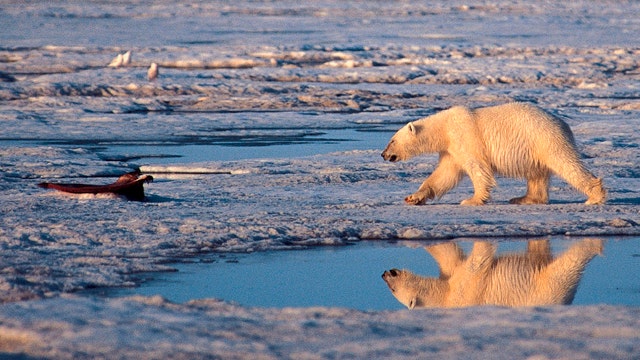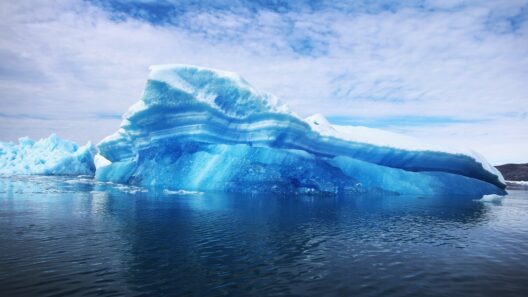In the contemporary discourse surrounding climate change, the phenomenon of global warming serves as a crucible where biases profoundly shape narratives and public perception. This intricate web of information can obscure the scientific consensus, debilitate actionable responses, and polarize opinion, making the understanding of such biases essential to addressing the climate crisis effectively.
The global warming discussion often oscillates between alarmism and skepticism, creating a dichotomy that can be misleading. One category of content that readers might encounter includes sensationalist reports that emphasize catastrophic outcomes without appending substantive scientific backing. These articles tend to elicit strong emotional reactions but may lack the nuanced understanding necessary for constructive dialogue. There is a risk of fostering apathy amongst audiences who feel overwhelmed by a deluge of dire predictions, prompting disengagement rather than the desired sense of urgency.
Conversely, there exists a body of work that espouses a contrarian viewpoint, frequently downplaying the severity of climate change or questioning the validity of established science. Such content often appeals to linguistic complexity and technical jargon, positioning itself as a bastion of “common sense” amidst what it describes as hysteria. The rhetorical strategies employed by skeptics can skew perceptions, leading readers to believe that there exists robust dissent amongst scientists regarding the existence and implications of climate change. This misinformation can lead to cognitive dissonance in public attitudes towards climate action.
To navigate this labyrinthine landscape of information, readers must develop a media literacy that allows them to discern the underlying biases in both sensationalist and skeptical narratives. A critical examination of sources becomes crucial; understanding credentials, funding sources, and the context in which information is provided can illuminate potential biases. A systematic approach to evaluating credibility involves scrutinizing peer-reviewed journals, official statements from reputable environmental organizations, and even evaluating the expertise of those presenting alternative viewpoints.
Another pivotal type of content is the scientific study itself, which, when communicated effectively, lays bare the empirical evidence underpinning climate change theories. However, the translation of complex scientific data into digestible narratives is frequently manipulated. Selective reporting or the cherry-picking of data can distort findings, fueling misinformation. It is here, within the realm of scientific communication, that biases can work both in favor of, and against, the urgent recognition of global warming. This duality illustrates the necessity for responsible reporting that contextualizes the implications of scientific findings accurately.
Furthermore, the diversity of stakeholders in the climate narrative, including policymakers, corporations, and environmental activists, adds layers of complexity to how information is disseminated. Corporate media often operates within economic frameworks that may prioritize clickbait over accuracy. This phenomenon can lead to a cycle wherein sensationalism drives engagement, consequently shaping public perception of climate change in ways that are not reflective of the scientific community’s consensus.
In social media contexts, the rapid transmission of information presents both opportunities and challenges. Viral posts may amplify scientific insights or underscore climate activism, galvanizing public interest and mobilizing grassroots movements. However, the propensity for misinformation to spread uncontested poses a significant challenge. The viral nature of certain content, devoid of proper context, can perpetuate biases, engender misunderstandings, and polarize discussions around critical environmental issues. Algorithms favoring engagement over accuracy exacerbate this crisis, often privileging sensationalism.
Within educational realms, there is an imperative to integrate comprehensive climate literacy into curricula. Influencing young minds by equipping them with critical thinking skills fosters environments where biases can be challenged. Such educational initiatives encourage a generation that is not merely reactive but proactive in addressing climate challenges. By instilling an understanding of the scientific processes and the socio-political fabrics surrounding climate discussions, future leaders can emerge more adept at understanding the complexities of bias.
The role of advocacy in shaping the global warming conversation cannot be overstated. Organizations dedicated to environmental equality work tirelessly to bridge the gap between scientific communities and the general public. They wield narratives that emphasize both factual data and emotional resonance, seeking to inspire action. However, even within these organizations, biases can emerge. The framing of messages—whether it emphasizes fear, hope, or resilience—can impact public reception and mobilization. Advocacy must tread carefully, balancing urgency with actionable solutions to empower rather than deter the audience.
Ultimately, the conversation about global warming is a multifaceted tapestry woven with biases that reflect broader societal values, economic interests, and ideological divisions. Readers can expect a spectrum of content that ranges from exhaustively researched scientific papers to emotionally charged opinion pieces, each colored by the biases of their creators. Recognizing this spectrum’s existence—and the implications it holds—is paramount for fostering informed dialogue about climate change.
In conclusion, the biases that shape the global warming conversation are ubiquitous, insidious, and profoundly impactful. By cultivating critical engagement with diverse types of content, including sensationalist narratives, contrarian viewpoints, scientific studies, and advocacy messages, individuals can navigate the complex landscape of climate discourse. Empowered with media literacy and a discerning eye, society can challenge biases, fostering a more cohesive understanding of the urgent need for climate action.







